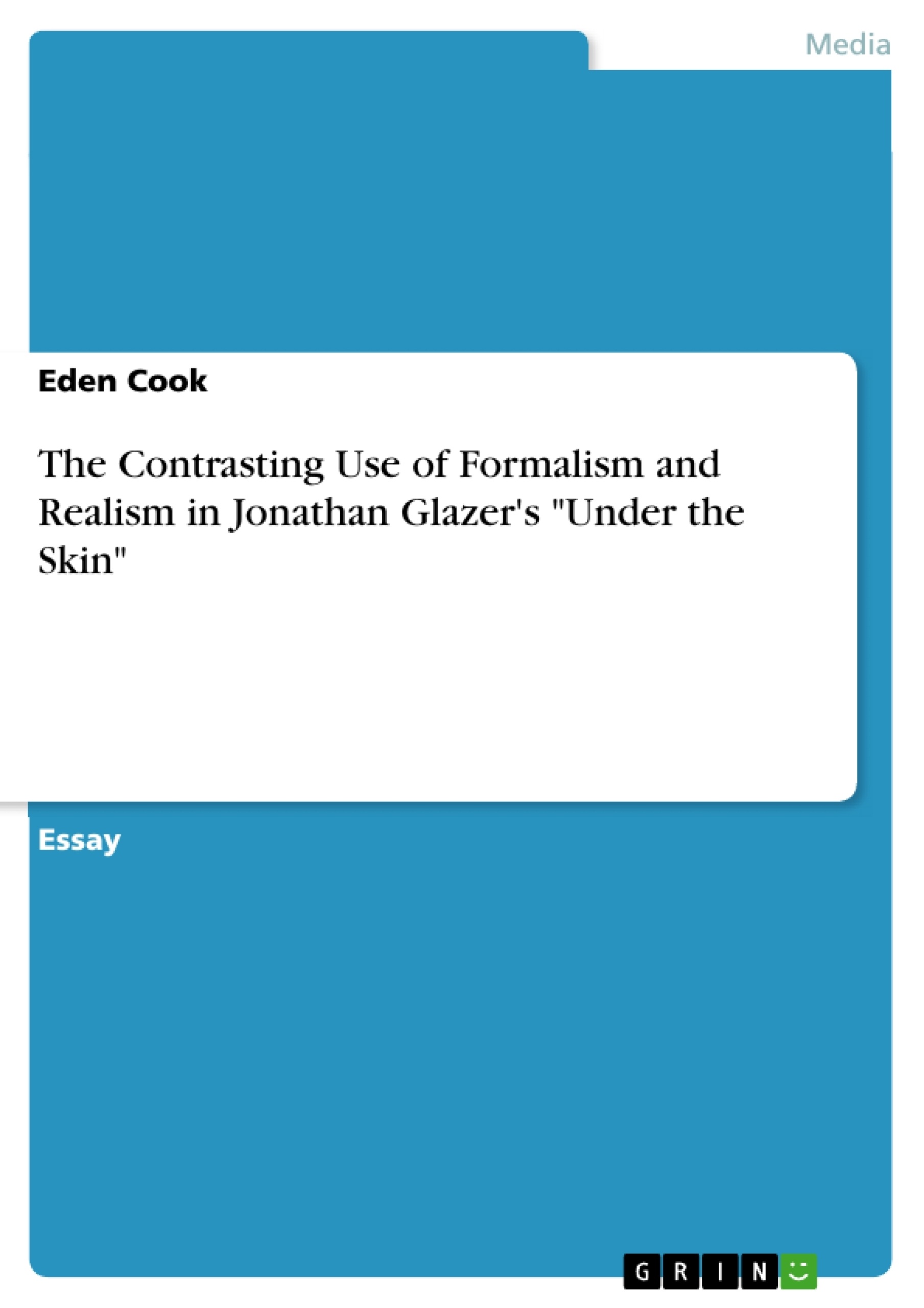Jonathan Glazer presents an explicit mix of formalism and realism in "Under the Skin". The contrasting techniques are used to present the films themes of the female body and its power and vulnerability in society. The use of realism effectively portrays the world we live in, whilst formalism is able to successfully convey the alien aspect of the film, showing the protagonist's actions to be very much other-worldy.
I look at various criticisms of formalism and realism in film and how they can be applied to "Under the Skin".
Table of Contents
- The contrasting use of formalism and realism in Johnathan Glazer's Under the Skin
- Formalism: The Opening Sequence and the Death Scene
- Realism: The Van Scenes
- Combining Realism and Formalism: The Alien World
- Jean Mitry's Theories on Realism and Formalism
- Formalism and the Protagonist's Discovery of Her Own Identity
Objectives and Key Themes
This essay examines the contrasting use of formalism and realism in Johnathan Glazer's film "Under the Skin." The analysis explores how these techniques are implemented throughout the film to create a sense of ambiguity and suspense, leaving the audience to decipher the meaning of the protagonist's actions. The essay aims to demonstrate how the combination of realism and formalism effectively presents the film's themes of alienation, human nature, and the female body in society.
- The juxtaposition of formalism and realism
- The exploration of human nature and the female body
- The ambiguous nature of the film's protagonist and her journey of self-discovery
- The representation of alienation and the collision of human and alien worlds
- The use of cinematic techniques to create a sense of unease and suspense
Chapter Summaries
- The essay begins by analyzing the opening sequence of "Under the Skin," which features a series of highly stylized and formalist scenes. These scenes establish the film's eerie and ambiguous tone, introducing the idea of space and the inhuman through creative techniques such as mise-en-scene and sound. The essay then explores another formalist scene in which Scarlett Johansson's character takes the clothes off of a dead woman's body, highlighting themes of the power and vulnerability of the female body.
- The essay then shifts its focus to the use of realism in the film, particularly in the scenes where the protagonist drives in the van searching for male prey. These scenes are characterized by long takes, subtle acting, and minimal dialogue, creating a sense of realism that mirrors the audience's perspective. The essay also discusses how the use of improvisation with non-actors contributes to the film's documentary feel.
- The essay further explores how the film effectively combines realism and formalism to create a sense of depth and meaning. It analyzes how the realism of the van scenes makes the protagonist's actions more frightening and relatable, while the formalist scenes featuring the alien world create a sense of otherworldly mystery and suspense.
- The essay then delves into the theories of Jean Mitry, who examines the duality of realism and formalism in film. Mitry's concepts are applied to "Under the Skin," highlighting how the film utilizes both techniques to create a nuanced exploration of the protagonist's transition from an alien being to someone who begins to recognize their human form and experience human emotions.
Keywords
This essay focuses on key concepts such as formalism, realism, cinematic techniques, human nature, the female body in society, alienation, ambiguity, and self-discovery. The analysis utilizes the theories of Irving Singer and Jean Mitry to explore the impact of these techniques on the overall meaning and effect of Johnathan Glazer's "Under the Skin."
- Quote paper
- Eden Cook (Author), 2015, The Contrasting Use of Formalism and Realism in Jonathan Glazer's "Under the Skin", Munich, GRIN Verlag, https://www.grin.com/document/314024




